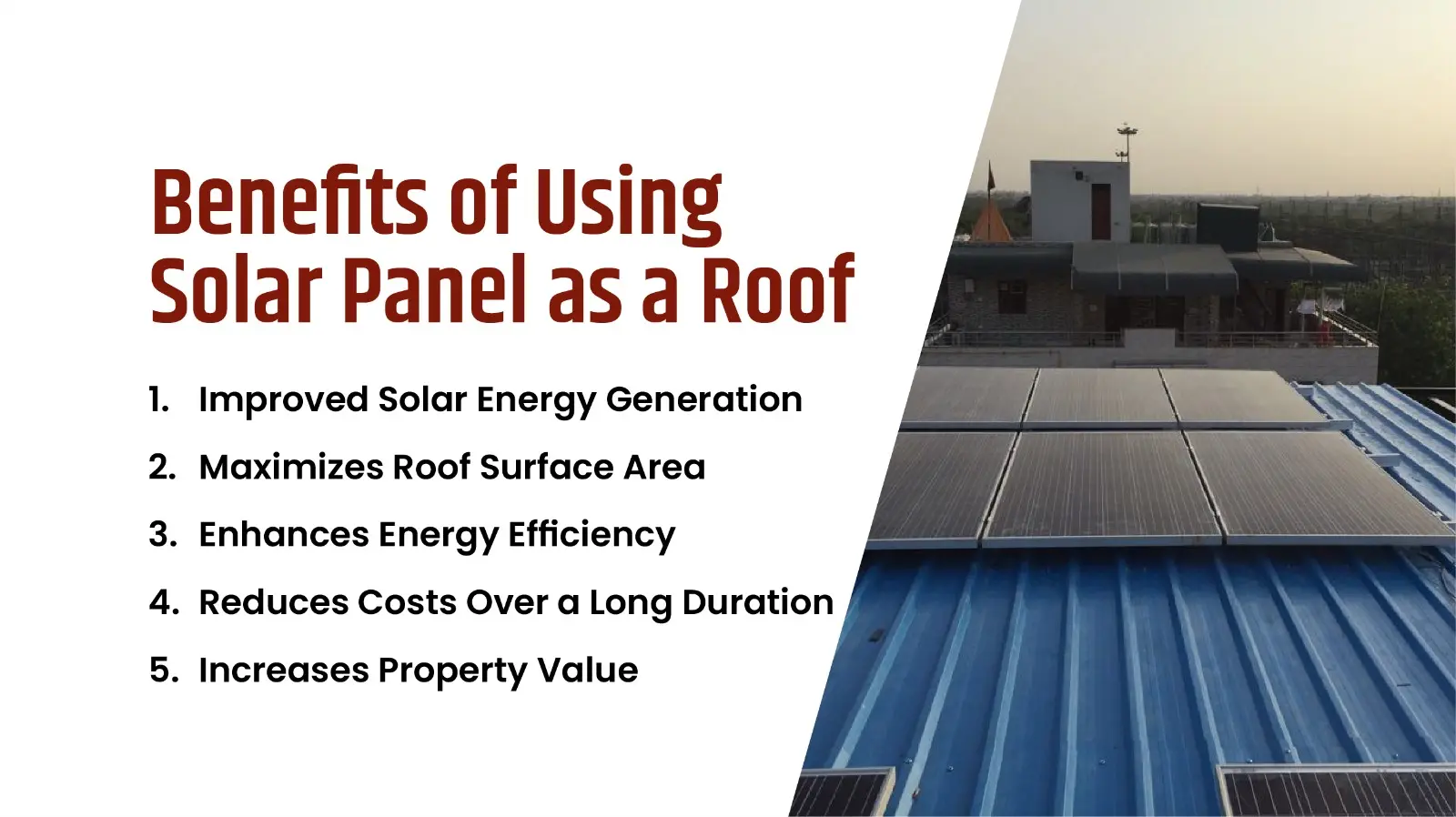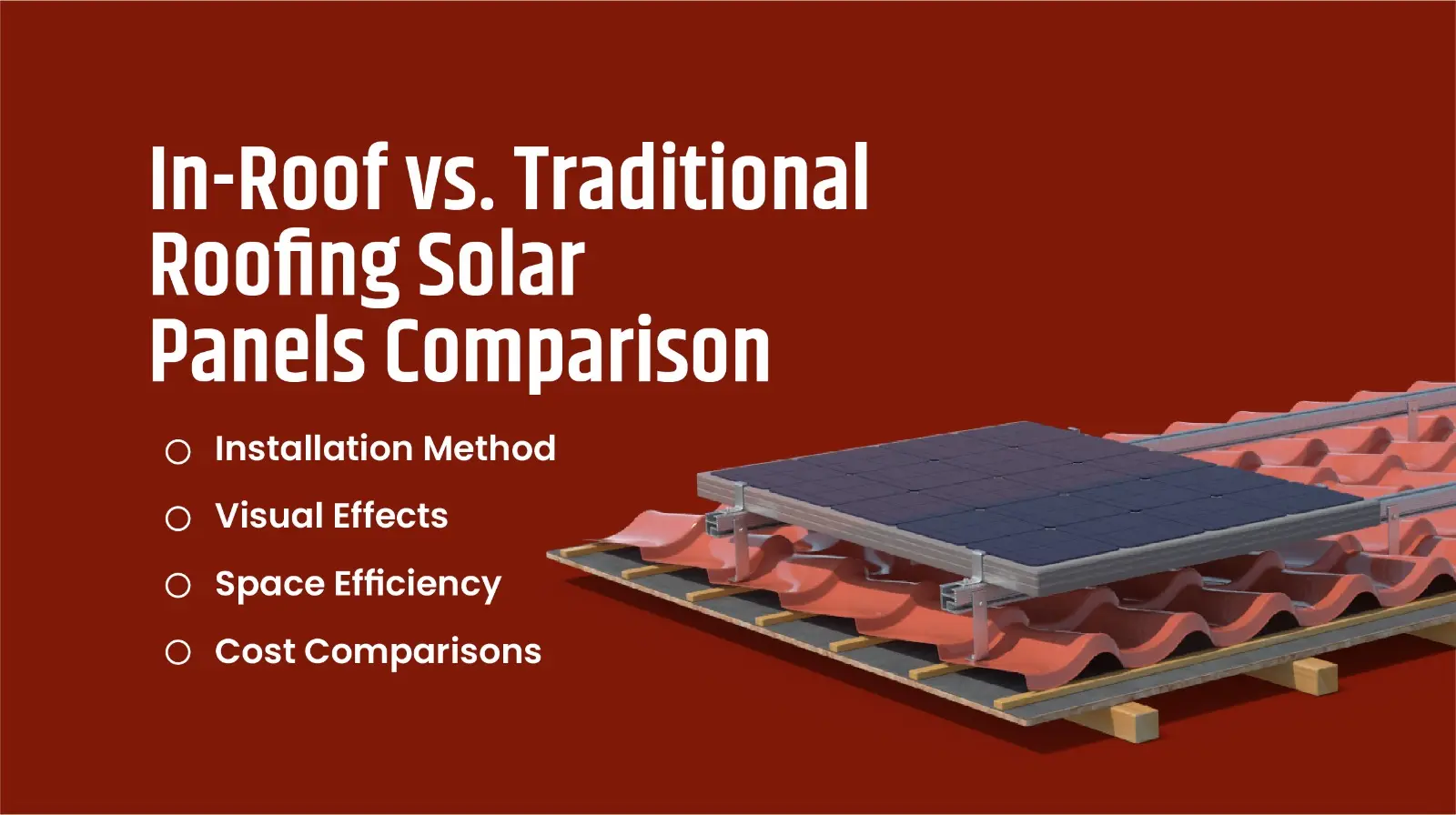Solar Inroof System: Using Solar Panels as a Roof
The modern world has been revolutionized by the concept of utilizing solar energy, with numerous options available for homes and businesses to take advantage of it. Solar energy not only provides homeowners with the opportunity to save money, but it also allows them to play a role in maintaining the environment. Using solar panels as roofs does not only protect the building, but also helps in the sustainability of the environment.
Solar roofing refers to replacing regular roofing materials with solar panels. Unlike traditional systems that mount panels over an existing roof, this approach incorporates solar panels into the structure itself. With this new technology, the aesthetics as well as energy expenditure of the building are maximized making optimized use of the roof space.
Benefits of Using Solar Panel as a Roof

When a solar panel doubles as a roof, it is a revolution for businesses and homeowners alike. It fosters energy production alongside structural functionality, leading to cost efficiency and sustainability. With the focus on renewable energy sources, this solution is rapidly gaining acceptance globally.
1. Creates Electrical Energy Without Compromising Home Protection
A solar roof serves the dual purpose of protecting your home while generating electricity from sunlight. For the energy-sensitive homeowners, this feature alone makes it a worthwhile investment.
2. Improved Solar Energy Generation
Commonly homeowners refrain from the idea of installing solar panels on the roof because they tend to look very chunky. With the new blend of solar panels and roofing, panels have a sleek modern appearance that will appeal to many more homeowners. This flexibility makes solar roofs more effective.
3. Maximizes Roof Surface Area
Solar panel installation as a roof replaces the conventional roofing concept. In rest-mounted installations, the solar panels eat up a lot of space. Integrated solar roofing uses the entire space without needing any additional equipment, mounting hardware, and other solar panel accessories.
If you want to know more about how solar panels work please read this blog - How do solar panels work?
4. Enhances Energy Efficiency
In-roof solar panels reap the most sunlight compared to conventional solar panels. In roof solar panels consume a lot of solar energy since they do not have any shading issues coming from conventional roof structures like gables and hips. Unlike in-roof solar panels, standard panels get placed at angles that do not face the sun directly, reducing energy production due to suboptimal exposure.
5. Reduces Costs Over a Long Duration
A solar roof is typically seen as more expensive, but in the long term the return is worth it. Having a clean energy generation system lowers the electricity bill significantly and dependency on grid power decreases. Other than that, there are propositioned benefits from various governments making solar roofing a very appealing option.
6. Increases Property Value
Real estate agents claim that the home energy rating system associated with solar panels and roofing integrated systems tends to lure energy-smart buyers. This translates to increased resale value in the long term due to the added solar system.
7. Endures Severe Weather Conditions
Compared to traditional roofs, solar roofs have a better longevity. Prolonged harsh rains, hail, strong winds, and even snow do not affect the functionality of the panels. The rugged design these panels possess means they withstand the elements without wearing out.
In-Roof vs. Traditional Roofing Solar Panels Comparison
|
Feature |
In - Roof solar panel |
Traditional solar panel |
|
Installation method |
Integrated into the roof by replacing conventional roofing materials. |
Installed on top of the existing roof using mounting brackets. |
|
Visual effects |
Sleek, modern look that blends with the architecture. |
Bulky appearance that may affect the aesthetic of the building. |
|
Space efficiency |
Maximizes roof space without extra hardware. |
Requires additional space for mounting systems. |
|
Cost comparison |
Higher upfront costs but better long-term savings and value. |
Lower initial cost but may incur higher maintenance over time. |
Things To Consider Before Installing A Solar Roof
- If the roof receives sunlight for a large part of the day, energy generation will be significantly higher. South-facing roofs are ideal, but east and west-facing roofs also yield good results.
- One of the most important inventions nowadays is solar energy and how it can be utilized. Not only does it help to save money for the homeowners but helps in conserving the environment. It also allows the installation of solar panel roofs which helps in the sustaining of the environment.
- Budget and Financing Options Even though the initial payment is expensive, there is an array of financing options available. These include solar loans, leasing schemes, and even government subsidies. Such aids make the cost of installing solar panels on roofs more feasible.
- Energy Requirements Before going ahead with the installation, assess how much electricity you consume in a day. Doing so will enable the determination of how big the solar roof needs to be so that it meets your energy requirements.
Conclusion
For modernists looking to cut expenses and become more cost-effective, using a solar panel as a roof is and will always remain, ŝ a smart investment. In addition to the myriad of benefits it brings, it's a compact solution for saving space, visually appealing as well, making it stand out in comparison to traditional solar panels. Financial incentives paired with growing environmental concern will make mountable solar roofs the go-to choice.
Switching to solar panels and roofing will help regain control over energy expenditures while paving the way toward a cleaner surrounding. If you wish to embrace renewable energy sources while going green, start by looking at your options today.

